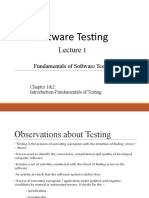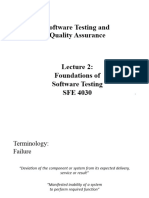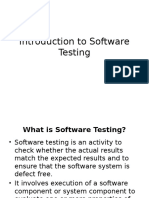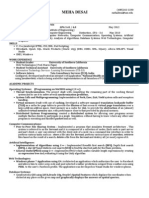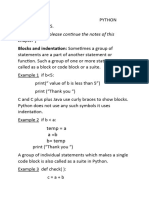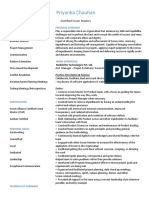0% found this document useful (0 votes)
25 views45 pagesSoftware Testing Chapter 1
The document provides a comprehensive overview of software testing, detailing its importance in ensuring functionality, detecting defects, and enhancing reliability. It outlines various testing stages, including development, release, and user testing, while emphasizing the need for systematic test design and the role of Model-Driven Test Design (MDTD). Additionally, it discusses the causes and impacts of software failures, the goals of testing, and the distinction between verification and validation.
Uploaded by
Akkal BistaCopyright
© © All Rights Reserved
We take content rights seriously. If you suspect this is your content, claim it here.
Available Formats
Download as PDF, TXT or read online on Scribd
0% found this document useful (0 votes)
25 views45 pagesSoftware Testing Chapter 1
The document provides a comprehensive overview of software testing, detailing its importance in ensuring functionality, detecting defects, and enhancing reliability. It outlines various testing stages, including development, release, and user testing, while emphasizing the need for systematic test design and the role of Model-Driven Test Design (MDTD). Additionally, it discusses the causes and impacts of software failures, the goals of testing, and the distinction between verification and validation.
Uploaded by
Akkal BistaCopyright
© © All Rights Reserved
We take content rights seriously. If you suspect this is your content, claim it here.
Available Formats
Download as PDF, TXT or read online on Scribd
/ 45























